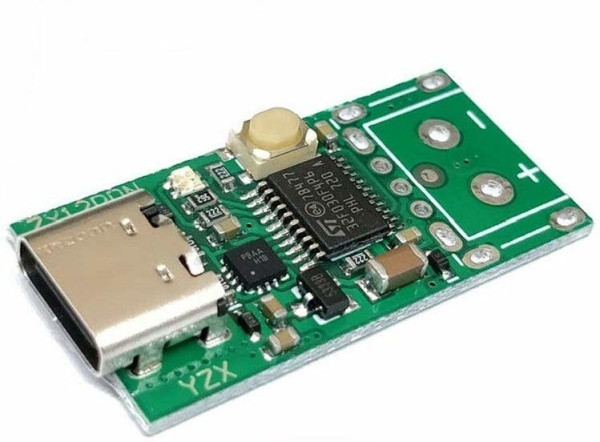Summary of SIMPLE ADAPTER BOARD TURNS A USB-C POWER SUPPLY INTO A VARIABLE VOLTAGE SOURCE
The ZY12PDN is an STM32 microcontroller-based USB-C power delivery trigger board that converts a USB-C power supply into a versatile, variable voltage power source. It negotiates with USB-C PD protocols to provide selectable voltages (5, 9, 12, 15, 20V) up to 100W, useful for various electronic devices. Unlike other USB PD adapters requiring I2C, it uses a push-button for voltage selection and must be configured on startup to stay in the desired mode. This simple yet flexible board enables easy power delivery negotiation via USB-C.
Parts used in the ZY12PDN USB-C Power Delivery Adapter:
- STM32 microcontroller
- USB-C connector
- Header pins
- USB-A connector
- Landing patterns for screw terminals
- Push-button
Being able to turn a USB-C supply to a variable power supply is certainly a big deal for a simple ingenious board like the ZY12PDN board shared by Keneth Finnegan on his twitter handle recently. The ZY12PDN is a simple STM-powered adapter board that turns a USB-C supply to a universal power supply for almost any electronic device.

We know that a USB-C, when it comes to power delivery, allows you to negotiate for 5, 9, 12, 15, 20 volts, with supply up to 100W which makes it possible to charge devices like laptops, phones, tablets, but the simplicity with which the ZY12PDN achieves it, brings lot of possibilities to the table.
The ZY12PDN, a USB-C power delivery trigger board uses the USB-C power delivery protocols to negotiate the level of voltage you want. The ZY12PDN has an STM32 microcontroller that helps in negotiating for the PD protocol. It also has, on one of its sides, a USB-C connector and on another side, header pins, USB-A connector and landing patterns for screw terminals.
Unlike some other USB power delivery adapters that need I2C communication for configuration, this power adapter board makes use of a push-button for setting the voltage you want to negotiate. “Finnegan” has created a video, that shows how the device works since the board does not come with any instructions. He explained that the board must first be configured anytime it is powered up with a sequence that helps to program the board, forcing it to stay powered-up in the desired mode. When connected, the USB power delivery uses a separate communication channel that automatically determines which becomes the supply and which the sink after which they negotiate the power profile they want to use in terms of voltage and current limits.
Read more: SIMPLE ADAPTER BOARD TURNS A USB-C POWER SUPPLY INTO A VARIABLE VOLTAGE SOURCE
